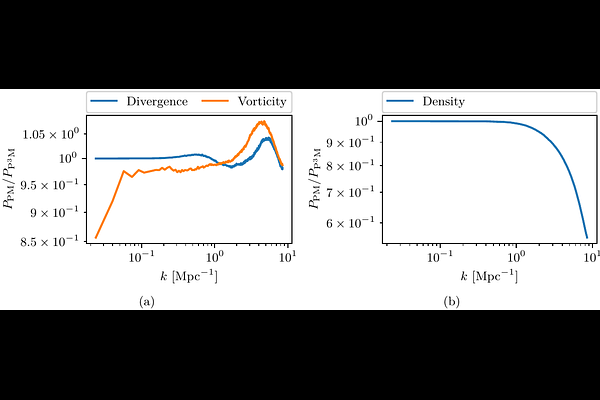Cosmic curl -- Features and convergence of the vorticity power spectrum in $N$-body simulations

Cosmic curl -- Features and convergence of the vorticity power spectrum in $N$-body simulations
Camilla T. G. Sørensen, Steen Hannestad, Thomas Tram
AbstractObservations of the cosmic velocity field could become an important cosmological probe in the near future. To take advantage of future velocity-flow surveys we must however have the theoretical predictions under control. In many respects, the velocity field is easier to simulate than the density field because it is less severely affected by small-scale clustering. Therefore, as we also show in this paper, a particle-mesh (PM) based simulation approach is usually sufficient, yielding results within a few percent of a corresponding P$^3$M simulation in which short-range forces are properly accounted for, but which also carry a much larger computational cost. However, in other respects the velocity field is much more challenging to deal with than the density field: Interpolating the velocity field onto a grid is significantly more complicated, and the vorticity field (the curl-part of the velocity field) is severely affected by both sample variance and discretisation effects. While the former can be dealt with using fixed amplitude initial conditions, the former makes it infeasible to run fully converged simulations in a cosmological volume. However, using the $N$-body code CONCEPT we show that one can robustly extrapolate the cosmic vorticity power spectrum from just 4 simulations with different number of particles. We expect our extrapolated vorticity power spectra to be correct within 5\% of the fully converged result across three orders of magnitude in $k$.